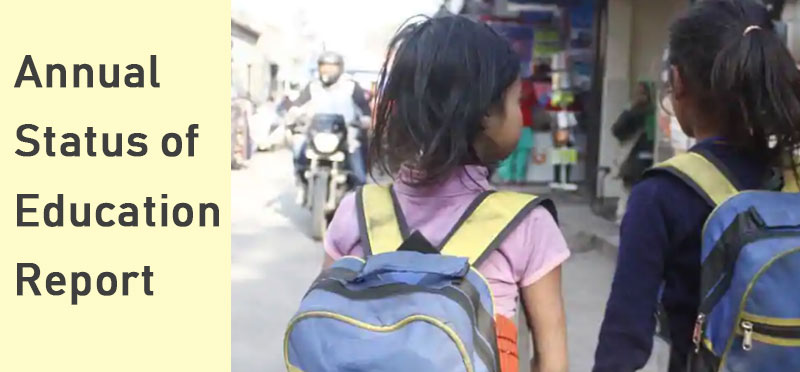
In News
The report, which is a survey of educational outcomes of children across India showed that there is a decline in numeracy skills of students from Class VIII in rural areas.
Highlights of the Report
- Improvement has been noticed in reading and arithmetic skills in lower primary students in rural areas.
- But, the numeracy skills of class VIII students declined from that of a decade ago. Half of them are unable to solve a numerical division problem and a quarter cannot read a text.
- 8% of Class VIII students in 2008 could read a Class II text. It was reduced to 74.6% in 2014 and declined further to 72.8%.
- In 2014, 44.1% of class VIII students could divide a three-digit number by a single digit. But, only 43.9% could do so in 2018.
- As per the report, the numbers are better for class III students. Their learning outcomes have improved from 2014 levels. Yet, 30% of Class III students in rural areas not in their grade level that is they are able to a double-digit subtraction and reading a Class II text.
- The report also found regional variations in children’s learning outcomes. For example, the report found that 25% of students of government schools in Uttar Pradesh are unable to recognise letters.
Also Read: RBI Eases ECB (External Commercial Borrowing) Norms
About ASER
- ASER is a survey conducted by NGO Pratham. It has been carrying out the survey since 2006 and has been giving realistic assessment of status of education in the country.
- For the 2018 survey, Pratham had covered 5.5 lakh students in 596 rural districts across the country. The students are aged between 3 and 16.
- Analysing the data from the report, Pratham states that the foundational education that is required for the children to cope with the expectations of upper primary grades are nowhere near to be met.
- It argues for increasing the learning outcomes among rural children across the country through government efforts.
Also Read: Global Housing Technology Challenge Launched
What is Government Doing?
- The government on its part has taken the following steps to maintain quality of primary education in the country.
- An integrated scheme called Samagra Shiksha Abhiyan was launched to provide access to education to all sections of the society, training the teachers, developing infrastructure/, digital initiatives etc.
- Sharing of learning outcomes to all states and UTs that act as a benchmark to ascertain student’s capabilities.
- Providing district level report cards through National Achievement Survey will identify the learning gaps at the district level. The NAS is conducted for for classes 3, 5 and 8 on learning outcomes.
- Under ‘Padhe Bharat Badhe Bharat’ (PBBB), the central government is providing support to states and UTs in developing early grade reading, writing & comprehension and mathematics skills for children in their foundational years.
- Performance Indicators for Elementary School Teachers (PINDICS) was developed and shared by NCERT to assess teachers performance at elementary level.

Leave a Reply
You must be logged in to post a comment.